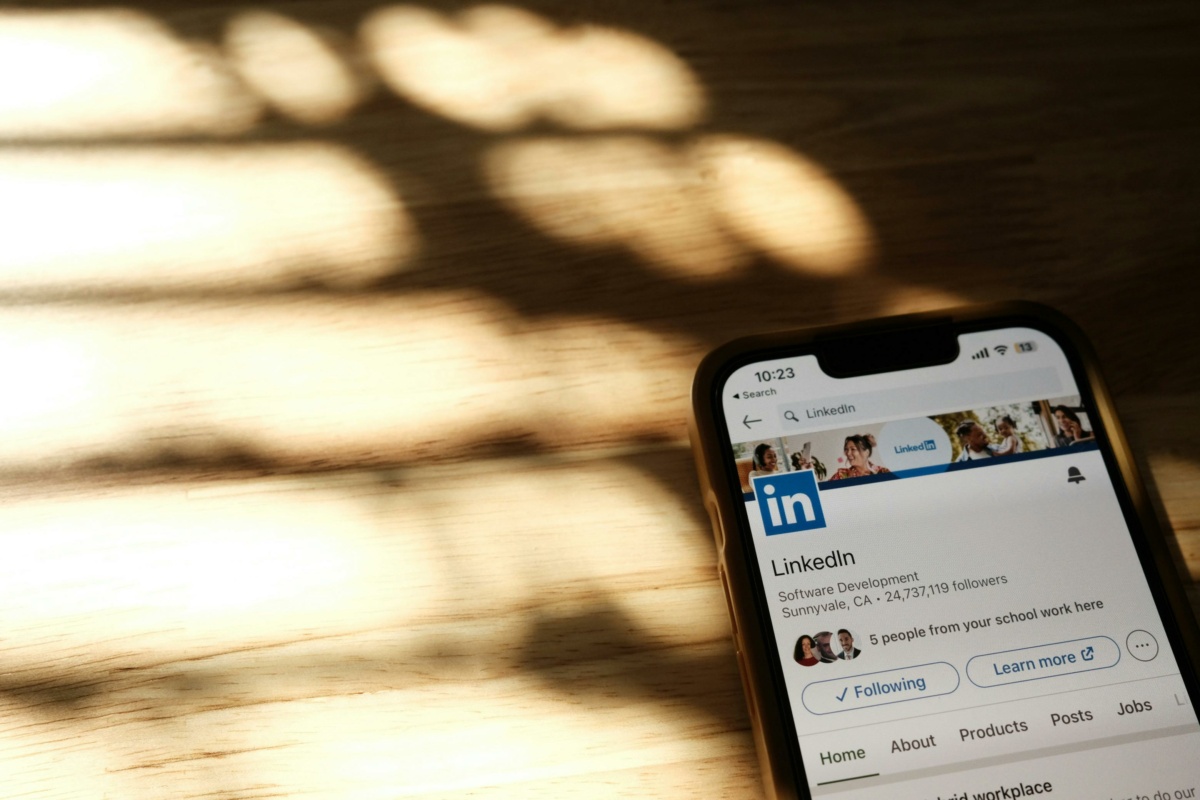
As the comms channel mix expands, the need for robust, multi-channel communication strategies to reach audiences has never been greater. With its billion members globally, including journalists, influencers, policymakers and industry or sector opinion formers, LinkedIn has emerged as the go-to platform for corporate social media engagement.
However, LinkedIn is much more than just a place for your spokesperson to post updates or share company news. To truly harness the platform’s potential, corporate communications teams should consider amplifying their organic efforts with paid advertising. This inexpensive and highly targeted element of LinkedIn can significantly extend your reach and impact. But for those still sceptical about the power of paid advertising on LinkedIn, let’s explore how it can be utilised to achieve strategic objectives.
Crafting a high-impact LinkedIn ad campaign for corporate communications
To harness LinkedIn’s full potential and drive meaningful business results, follow these five key steps for creating a strategic, ROI-focused ad campaign:
1. Align your campaign with broader business objectives for maximum ROI
Start by identifying key metrics that define success for your campaign, tying them directly to overarching corporate goals. These could include:
- Increasing brand awareness among decision-makers
- Driving traffic to key corporate announcements or thought leadership content
- Enhancing reputation among industry influencers
- Supporting recruitment efforts for critical roles
- Generating qualified leads for the sales team
Clear, business-aligned KPIs will not only help you measure effectiveness but also showcase the tangible impact of your LinkedIn ad campaigns on corporate objectives.
For example, if a key business goal is expanding into a new market, your LinkedIn campaign could target decision-makers in that region with thought leadership content. You could then measure success through engagement rates, leads generated, and ultimately, new business opportunities created – directly tying your communications efforts to business growth.
2. Define your audience & budget
Next, segment your audience using LinkedIn’s detailed targeting options to create segments that align with your target personas, allowing for more personalised and relevant messaging. This is where the platform truly shines for corporate communications. You can target by:
- Job title, function, and seniority
- Company size, industry, and name
- Skills, interests, and groups
- Education level and field of study
- Demographics and geography
This granular targeting allows you to reach precisely the decision-makers, influencers, or industry professionals most relevant to your message. Whether you’re aiming to build thought leadership among C-suite executives, engage potential partners in a specific sector, or attract top talent in your field, LinkedIn’s audience-targeting capabilities enable you to tailor your campaign for maximum impact and efficiency.
Once you’ve defined your audience, allocate your budget based on campaign objectives. LinkedIn’s forecasting tool allows you to estimate the cost per result before you launch the campaign. This data-driven approach enables you to fine-tune your spending for optimal reach and engagement. For instance, you can gauge the investment required to effectively target senior stakeholders in a specific industry, ensuring your message reaches high-value decision-makers without overspending.
3. Create compelling content
Craft content (the post itself, the image or asset that accompanies it) that aligns with your organisation’s voice and messaging strategy. LinkedIn offers various formats suitable for corporate communications, including sponsored content for sharing company news, text ads for concise updates, and dynamic ads that are tailored to each member based on their own LinkedIn profile data. Follow best practices such as using high-quality, professional images that reflect your brand, and concise, impactful messaging that resonates with your target audience of industry professionals and decision-makers. But remember to create original content and do not just copy and paste what you are using on other channels.
4. Run A/B tests to refine your corporate messaging
Testing is critical to understand what resonates with your professional audience. A/B testing involves creating two versions of an ad with a single variable difference (e.g., headline or call-to-action) to see which performs better. For corporate communications, this could mean testing different approaches to presenting company news, thought leadership content, or executive statements. Set clear objectives and metrics to measure success, such as engagement rates with C-suite executives or click-through rates to your corporate newsroom.
Don’t be concerned about the potential impact of a less successful post in your A/B test. The beauty of this approach is its simplicity and low risk. Even if one version doesn’t perform as well as the other, it provides valuable insights without causing any significant impact on your brand or messaging. Remember, the goal is to learn and improve, so view both outcomes as wins – one shows you what works best, while the other teaches you what to avoid in the future. This iterative process is easy to implement and will help you refine your communication strategy over time with minimal effort and worry.
5. Launch, monitor, and optimise your campaign for maximum impact
Once your campaign is live, regular monitoring is essential to ensure your corporate message is being effectively delivered and contributing to your broader business goals. Use LinkedIn’s analytics tools to quickly and easily track performance against the key metrics and KPIs you established in alignment with your business objectives.
For example, if your goal was to increase brand awareness among decision-makers in a new market, monitor metrics like impression share and engagement rates within that specific audience segment. If you’re aiming to support recruitment efforts, track application starts or career page visits resulting from your ads.
Look for patterns in the data that can inform future campaigns and help refine your targeting and messaging strategies. Pay particular attention to how different segments of your professional audience (e.g., industry analysts, potential partners, or media contacts) are responding to your content.
Learn to navigate LinkedIn with confidence
Ready to unlock the full potential of LinkedIn for your corporate communications? Headland offers tailored workshops designed to empower Corporate Affairs teams with cutting-edge strategies and hands-on expertise. Email us at digital@headlandconsultancy.com to find out more.
Read more Insights & News
